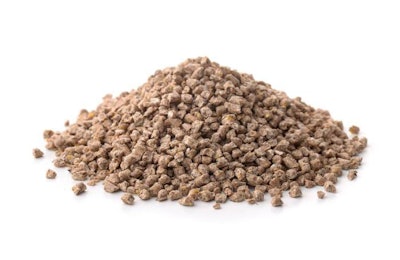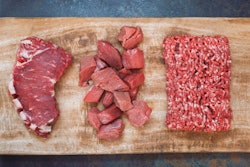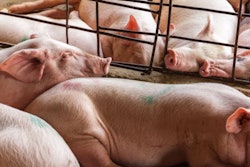
Estimated reported to FEFAC show poultry feed production will increase while pig and cattle feed will fall
Compound livestock feed production in the EU-28 in 2019 was down 0.9% to 161.7 million metric tons (mmt) from 2018, according to new estimates by the European Feed Manufacturers’ Federation (FEFAC).
In its report, FEFAC said overall compound feed production in the EU is likely to remain stable in 2020.
Poultry feed production
In the EU, poultry feed production remains the leading segment of industrial feed production, well ahead of pig feed. While poultry production is expected to rise 2.5% in 2019, poultry feed production will increase by only 0.1%. FEFAC said this could be due to feed efficiency gains, but also to the sharp increase in poultry meat imports, particularly from Brazil.
In 2020, “the demand for poultry feed will be mostly conditioned by the extent to which Brazil will recover its leading position on the global poultry meat market after a meat fraud scandal two years ago and resuming exports to the EU, thus weighing on the EU production,” the report said.
Pig feed production
Pig feed production is expected to decrease by 0.9% in the EU in 2019. For 2020, demand for pig feed is expected to remain stable in countries free of African swine fever (ASF). However, “it is unlikely that countries with ASF cases recorded in domestic pig farms will manage to reverse the trend.”
“Despite growing export opportunities (e.g. trade dispute between China and the U.S., prevalence of ASF in many Asian countries), EU pork production increased only moderately,” the report said.
FEFAC also noted in the report that the outlook on pork and pig feed production could change dramatically if ASF spreads into leading pig-producing countries such as Spain, Germany, Denmark or The Netherlands.
Cattle feed production
Cattle feed demand in the EU fell 2.3% in 2019 from 2018, with the biggest decreases reported in Ireland (down 15%) and the United Kingdom (down 7%).
FEFAC said drought was partly to blame for the decrease.
“The poor stocks of forages resulting from the 2018 drought and heat waves induced a significant increase in the compound feed demand for cattle on the first quarter 2019,” the report said. “For the rest of the year, the back to normal weather conditions together with increasing restrictions on phosphorous emissions in certain countries resulted in an annual fall of the demand for cattle feed.”


















